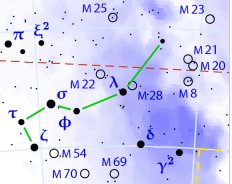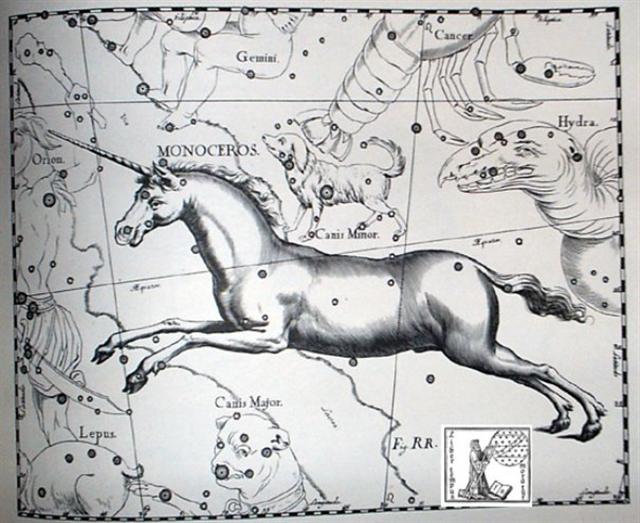The text therefore could give reason to count the last 4 glyphs in line Cb10 to the beginning of line Cb11. When Nash (the Arrowhead) was seen close to the Full Moon in June 22 (173 = 172 + 1) it could have meant Old Sun had reached his last day. A new year and a new king would come:
Such a constellation as Leo was once typical for the summer heat north of the equator. But at that time of the year Leo could not be seen, it was too close to the Sun. At the opposite side of the year, though, it could be seen in the winter night. South of the equator, on the other side, when Leo was observed close to the Full Moon in the night it was not a sign of winter but of summer. The Arrowhead star (Nash) which was rising with the Sun in December 20 (354) would, when observed close to the Full Moon from Easter Island in late June - ideally the day after the June solstice (172 = 354 - 182) - be a Sign of the 'Long Pit' (marua-roa):
We should look at the glyphs in line Cb11 for what happened next, and the 8th Chinese station evidently came 10 days after Nash in December 30 (364):
The South Dipper is a part of the Sagittarius constellation which resembles the Big Dipper in Ursa Major:
There is a Unicorn (Monoceros) constellation due south from Procyon and if we should guess the RA day of Procyon would agree with that of α Monocerotis, then the distance to φ Sagittarii would have been 284.0 (Nash) - 114.9 (Procyon) = 169 (= 13 * 13) days:
"Monoceros, the Unicorn, das Einhorn in Germany, la Licorne in France, and il Unicorne or Liocorne, in Italy, lies in the large but comparatively vacant field between the two Dogs, Orion, and the Hydra, the celestial equator passing through it lengthwise from the Belt of Orion to the tail of the animal, just below the head of Hydra. Proctor assigned to it the alternative title Cervus ... This is a modern constellation, generally supposed to have been first chartered by Bartschius as Unicornu; but Olbers and Ideler say that it was of much earlier formation, the latter quoting allusions to it ... as 'the other Horse south of the Twins and the Crab'; and Scaliger found it on a Persian sphere." (Allen) Possibly, therefore, the associated animals (Crocodile etc) were chosen to be 169 days earlier than their corresponding lunar station stars. We have to investigate. | |||||||||||||||||||||||||||||||||||||||||||||||||||||||||||||||||||||||||||||||||||||||||||||||||



